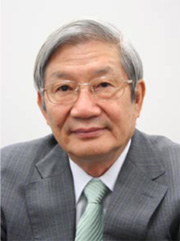Home > Highlighting JAPAN > Highlighting Japan SEPTEMBER 2011 > Grand Designs for Reconstruction
Highlighting JAPAN
COVER STORY: A Rousing Summer in Tohoku
Grand Designs for Reconstruction
On June 25, the Reconstruction Design Council in response to the Great East Japan Earthquake, a government body set up to compile recommendations for reconstruction, published a report entitled "Towards Reconstruction—Hope Beyond the Disaster." The Japan Journal's Osamu Sawaji interviewed Makoto Iokibe, president of the National Defense Academy and chairman of the Reconstruction Design Council, about the significance of the Council's recommendations and the future reconstruction of the affected area.

Makoto Iokibe, chairman of the Reconstruction Design Council
How did it make you feel when you visited the area affected by the Great East Japan Earthquake?
Makoto Iokibe: As I live in Kobe, Hyogo Prefecture, my house was damaged during the Great Hanshin-Awaji Earthquake of 1995, due to subsidence caused by cracks in the ground. Some of the traditional Japanese-style wooden houses in my neighborhood were completely destroyed. In that sense, the damage caused by the Great Hanshin-Awaji Earthquake was fairly selective, even within the same area. This time however, the tsunami that followed the Great East Japan Earthquake laid waste to more or less everything in its way. I went to see some of the affected areas along the Pacific coast in Tohoku a month after the quake, and the entire town had been reduced to rubble. Even the hospital, the town hall and other steel-reinforced public buildings that had been designed to withstand disasters had been devastated. Looking out at that deserted landscape was a real shock. It seemed almost unreal.
What possibilities are there for the affected area as part of the recovery process from the Great East Japan Earthquake?
Clearly, we know now that it is impossible to physically defend our town against a tsunami of that scale. The reconstruction process will therefore need focus on the concept of "disaster reduction," aimed at minimizing damage utilizing various means in the event of a natural disaster rather than preventing it entirely. With that in mind, our report has proposed the mass relocation of coastal towns and villages in the affected area to higher ground, although facilities for fisheries should be rebuilt near the coast. We have proposed creating entirely new communities on the hill, including facilities such as schools, hospitals and care homes as well as residential properties, creating a fully integrated local care structure, to cope with the aged society.
We have also proposed using renewable energy in the affected area. Given the various arguments going on at the moment with regard to nuclear power, we are going to have to increase the amount of energy that we generate from renewable sources in the future. That much is inevitable. As part of the process of rebuilding the affected area, we have recommended incorporating renewable energy schemes into town planning from the start, including solar and biomass-based technologies. This would create cutting-edge towns and villages in the affected area that would act as a model for urban development in the future, not only in Japan but around the world as well.
In Kobe, the Disaster Prevention Institution was established as an international center for disaster reduction following the Great Hanshin-Awaji Earthquake. We have proposed creating a similar center in Miyagi or Iwate Prefecture, to accurately record and analyze the disaster caused by the Great East Japan Earthquake and to share its findings with the rest of the world. Japan's role in all of this is to improve standards of disaster reduction the world over.
We also need to put in place a more effective framework to enable us to quickly organize disaster relief activities in other countries, even if only to repay the kindness that people around the world have shown Japan. For example, the Japan Self-Defense Forces have drawn up plans to establish a depot stocked with emergency relief supplies and equipment on the Nansei Islands [island chain in southwest Japan stretching from Kyushu to Taiwan].
As chairman of the Council, is there anything you would particularly like to say to people around the world?
After the devastation caused by the Great Hanshin-Awaji Earthquake of 1995, the speed with which we rebuilt took the whole world by surprise. I have total confidence that Japan will once again recover from disaster and rebuild the Tohoku area brighter and better than ever before. I hope that people around the world will get involved in the reconstruction process.
Step 1 of the Roadmap Towards Restoration from the Accident at Fukushima Daiichi Nuclear Power Plant, TEPCO has already been completed, with stable cooling capabilities at the nuclear reactor now fully restored. Japanese companies meanwhile have managed to restore production levels to 95% of those prior to the earthquake, as of August. I hope that people from all over the world will come to visit Tohoku for themselves, and contribute to Tohoku's socioeconomic revitalization through investment in local industries.
Once we have established memorial forests as mentioned in the Seven Principles for the Reconstruction Framework, I would also like to see people from all over the world, not just Japan, coming together on March 11 every year, to remember the victims of the earthquake and pledge their support to help revitalize the affected area.
© 2009 Cabinet Office, Government of Japan






